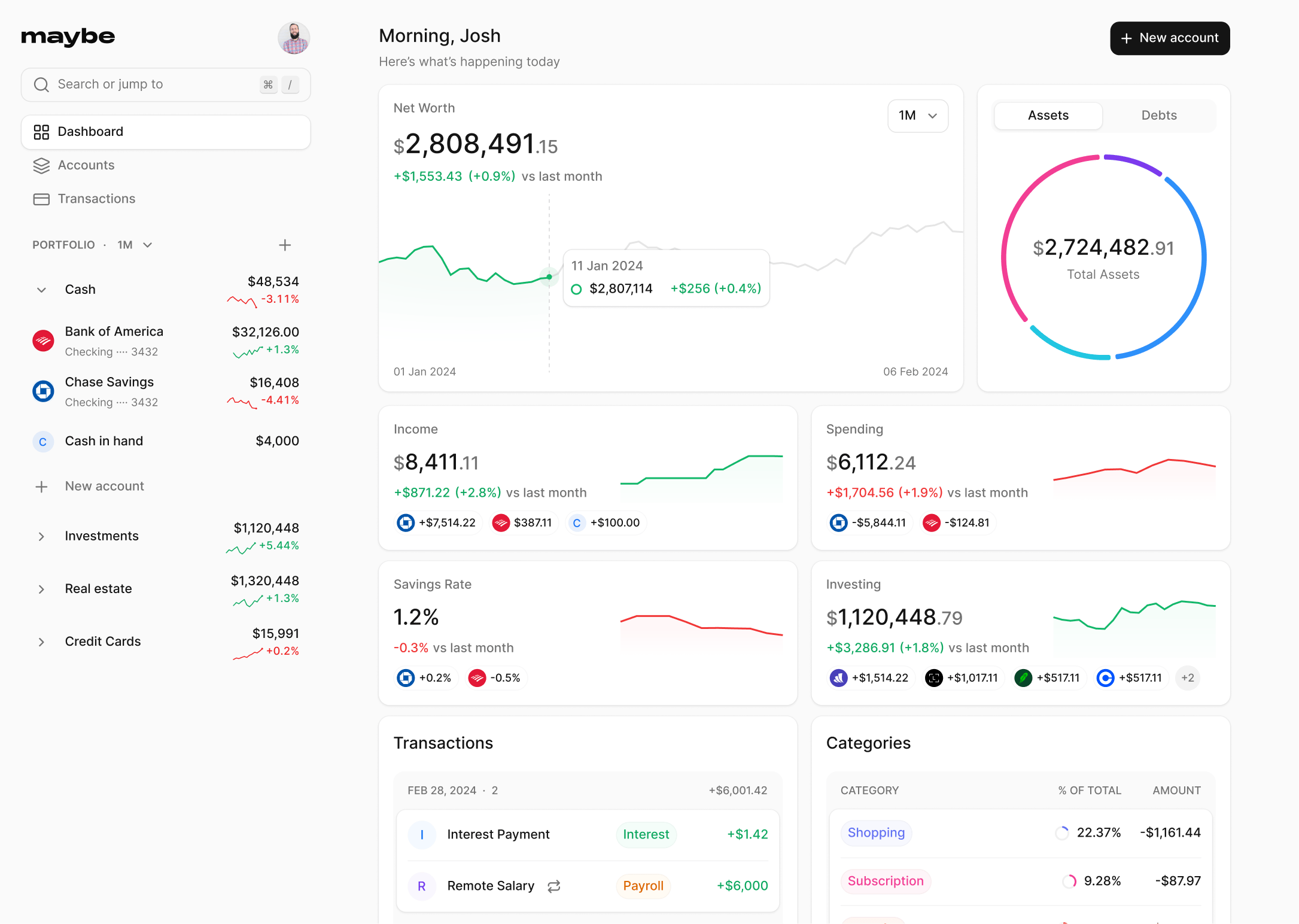The 50/30/20 Rule: A Simple Path to Financial Wellness

Author
Josh Pigford
The 50/30/20 rule of budgeting, widely popularized by U.S. Senator Elizabeth Warren in her book All Your Worth: The Ultimate Lifetime Money Plan, offers a simple yet effective framework for managing personal finances. This budgeting rule emphasizes dividing your after-tax income into three distinct categories: 50% for needs, 30% for wants, and 20% for savings. This approach not only simplifies the budgeting process but also ensures a balanced allocation of income, catering to immediate needs, personal desires, and future financial security.
Definition and Origin
The genesis of the 50/30/20 budgeting rule lies in its straightforward methodology for financial planning. By recommending that individuals allocate up to 50% of their after-tax income to essential needs and obligations, it underscores the importance of addressing fundamental living expenses. The remaining income is then split between savings and debt repayment (20%) and discretionary spending (30%). This rule serves as a blueprint to help individuals strike a balance between covering necessary expenses, saving for emergencies and retirement, and enjoying life's pleasures.
Breaking Down the Categories: Needs, Wants, Savings
- Needs: These are expenses that are crucial for basic survival and must be met without fail. They include but are not limited to, utility bills, rent or mortgage payments, healthcare, and groceries. According to the 50/30/20 rule, these necessities should consume no more than 50% of your after-tax income.
- Wants: This category encompasses all non-essential expenses---items or services you enjoy but can live without. Examples include subscriptions, hobby supplies, dining out, and vacations. These wants should account for 30% of your after-tax income, allowing for personal enjoyment while maintaining financial discipline.
- Savings: The final 20% of your income should be directed towards savings and investments. This includes building an emergency fund to cover at least three months of living expenses, contributing to retirement accounts, and saving for long-term goals like purchasing a home. This segment of the budget is crucial for securing your financial future and ensuring preparedness for unforeseen events.
By adhering to the 50/30/20 rule, individuals can create a balanced budget that accommodates daily living costs, personal indulgences, and future financial goals. This budgeting strategy not only simplifies financial planning but also promotes a healthier, more sustainable approach to personal finance management.
Calculating Your Monthly Budget Using the 50/30/20 Rule
To effectively apply the 50/30/20 rule of budgeting, one must first understand how to calculate their monthly budget using this method. This approach simplifies personal finance management by dividing after-tax income into three categories: needs, wants, and savings. Here's a step-by-step breakdown:
Determining Your After-Tax Income
- Identify your gross income: This is your total earnings before any deductions.
- Subtract taxes: Calculate the amount of federal, state, and any other taxes deducted from your gross income. Remember not to subtract deductions for health insurance, 401(k) contributions, or other non-tax deductions at this stage.
- Resulting figure: The amount you have after subtracting taxes from your gross income is your monthly after-tax income. This is the base figure for applying the 50/30/20 rule.
Allocating Income to Needs, Wants, and Savings
Once the after-tax income is determined, the next step involves allocating this income across the three categories outlined by the 50/30/20 rule.
- 50% for Needs: Essential expenses such as housing, food, transportation, basic utilities, insurance, and minimum loan payments. These are non-negotiable and critical for basic survival and the ability to work.
| Category | Examples |
|---|---|
| Housing | Mortgage, rent, property taxes |
| Transportation | Car loan/lease, public transit |
| Utilities | Electric, gas, water |
| Food | Groceries, essential dining |
| Insurance | Health, car, home |
| Minimum Payments | Credit cards, loans |
- 30% for Wants: Non-essential expenses that enhance lifestyle, such as monthly subscriptions, travel, entertainment, and dining out. These should be adjusted based on financial goals and priorities.
| Category | Examples |
|---|---|
| Entertainment | Movies, concerts, sporting events |
| Leisure Activities | Vacations, hobbies |
| Personal Care | Grooming, gym memberships |
| Dining Out | Restaurants, take-out |
- 20% for Savings and Debt Repayment: Funds allocated towards building an emergency fund, saving for retirement (e.g., 401(k), IRA), and paying off high-interest debt.
| Category | Examples |
|---|---|
| Emergency Fund | Savings account |
| Retirement | 401(k), IRA contributions |
| Debt Repayment | Credit card, high-interest loans |
By following these steps, individuals can create a budget that not only covers their essential needs but also allows for personal enjoyment while ensuring future financial stability. This structured approach to budgeting encourages a balanced and disciplined financial lifestyle.
Tips for Successfully Implementing the 50/30/20 Rule
To effectively implement the 50/30/20 rule of budgeting, individuals must adopt a strategic approach to manage their finances. This section provides actionable tips under three critical subheadings to guide users in successfully applying this budgeting rule.
Prioritizing Expenses to Fit the Budget
- Track Your Spending: Initially, monitor your expenses for a month or two to understand your spending habits. Categorize your spending into needs, wants, and savings to see how closely it aligns with the 50/30/20 guideline.
- Identify Critical Costs: Focus on non-negotiable expenses such as rent, utilities, groceries, and insurance premiums. These are your needs and should not exceed 50% of your after-tax income. Being mindful of these expenses is crucial as they represent the largest portion of your budget.
Adjusting Categories as Needed
- Flexibility in Percentages: Understand that the 50/30/20 rule is not rigid. Based on personal circumstances and financial goals, adjusting the percentages can better align the budget with your lifestyle, especially in high-cost living areas or for those with significant long-term savings goals.
- Assess and Adjust Wants: Evaluate your spending on wants and identify areas where you can cut back. Reducing non-essential expenses can help you stay within the 30% allocation and contribute more towards your savings.
Using Tools and Apps for Budget Tracking
- Automate Savings: Set up automatic transfers from your checking to your savings or investment accounts to ensure a consistent and hassle-free savings process. This helps in steadily growing your funds without manual intervention.
- Leverage Budgeting Tools: Utilize budgeting apps or personal finance software that simplifies tracking your spending according to the 50/30/20 categories. Tools like Moneywyn can provide insights into your financial standing and help in making informed budget adjustments.
By following these tips, individuals can navigate their financial journey with more confidence and clarity, ensuring a balanced budget that supports their needs, wants, and savings goals.
Common Challenges and Solutions
Dealing with Irregular Income
- Calculate Average Monthly Income: For those with fluctuating earnings, determining an average monthly income is essential. This involves adding up the net income for the past 12 months and dividing by 12. This figure serves as a base for budgeting according to the 50/30/20 rule.
- Establish a Reserve Fund: To manage income variability, setting up a reserve fund is crucial. All income should first go into this fund, from which a regular "paycheck" is transferred to the checking account to cover essential and discretionary expenses.
Managing Overspending in Wants Category
- Monitor and Adjust Spending: Keeping track of spending in the wants category is vital. If overspending is detected, identifying which non-essential expenses can be reduced or eliminated helps stay within the 30% allocation.
- Utilize Budgeting Tools: Budgeting apps or tools can assist in categorizing and tracking expenses. This helps in making informed decisions about where to cut back on non-essential spending.
Adjusting for High Cost of Living Areas
- Modify Percentage Allocations: In areas with a high cost of living, adjusting the percentage allocations of the 50/30/20 rule may be necessary. Allocating more than 50% to needs and adjusting the wants and savings categories accordingly can help manage finances effectively.
- Explore Income Enhancement Options: For those finding essential expenses exceeding the 50% mark of their income, seeking ways to increase income through additional work or side gigs can provide financial relief.
| Challenge | Solution |
|---|---|
| Irregular Income | Calculate average monthly income, establish a reserve fund |
| Overspending in Wants Category | Monitor and adjust spending, utilize budgeting tools |
| High Cost of Living Areas | Modify percentage allocations, explore income enhancement options |
By addressing these common challenges with strategic solutions, individuals can better adhere to the 50/30/20 rule of budgeting, ensuring a balanced approach to managing their finances.
FAQs
What is the 50/30/20 Rule in Budgeting?
The 50/30/20 rule is a budgeting guideline suggesting that you allocate 50% of your income to essential needs, 30% to discretionary spending or wants, and 20% to savings and financial goals.
Is the 50/30/20 Budgeting Rule Effective for Everyone?
The effectiveness of the 50/30/20 budgeting rule can vary. While it offers a straightforward approach to managing finances, it might not suit everyone's unique financial situation, especially if 50% of one's income does not adequately cover essential needs due to high living costs or lower income levels.
Are There Any Drawbacks to Using the 50/30/20 Budgeting Rule?
Critics of the 50/30/20 rule argue that it may be too restrictive for some people, failing to account for individual values, lifestyles, and financial goals. Particularly, allocating only 50% of income to needs may not be feasible for those living in areas with a high cost of living.
How Does the Smart Asset Interpret the 50/30/20 Rule?
According to Smart Asset's interpretation, the 50/30/20 rule involves dedicating 50% of your salary to cover basic living expenses (such as rent and utilities), 30% for personal spending, and the remaining 20% for savings or to pay off debt.
Step-by-Step Instructions on How to Void a Check

Josh Pigford
Ask Maybe: My Financial Advisor Won't Talk Bitcoin
Travis Woods
Why do most investors buy high and sell low?

Josh Pigford
Join the Maybe  waitlist
waitlist
Join the waitlist to get notified when a hosted version of the app is available.
